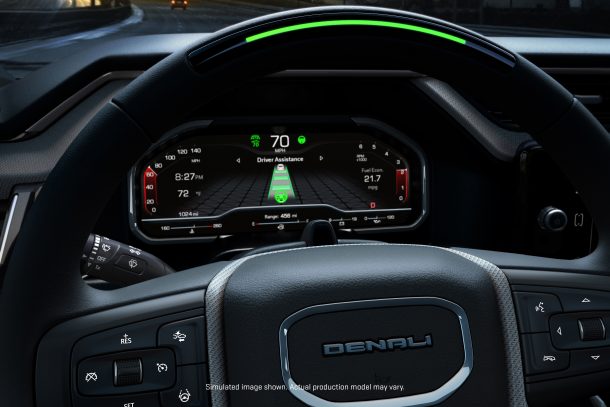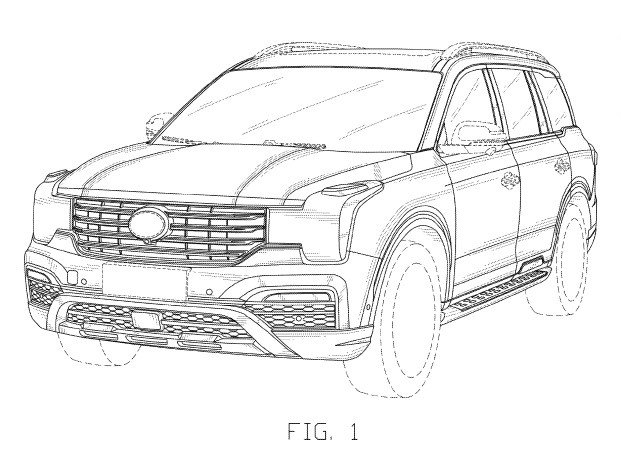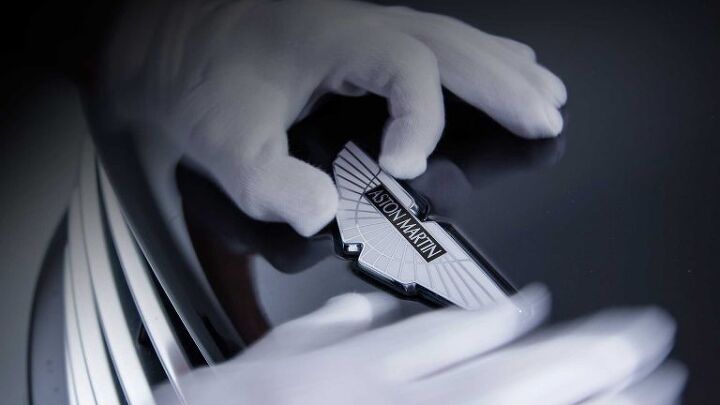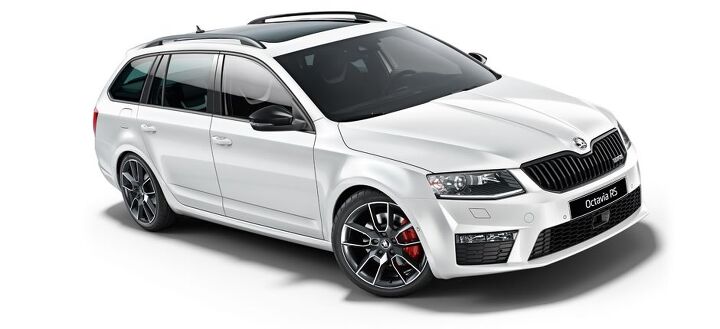#trademark
Ford and GM Feuding Over Names
Last month, General Motors filed a trademark infringement lawsuit against Ford’s use of the term BlueCruise for its SAE Level 2 advanced driving assistance suite. GM has argued the phrase is too close to its own SuperCruise system and wants Blue Oval to ditch the name for something else. Ford recently filed a motion asking the US District Court in San Francisco to throw out the case, as it believes the term cruise is common enough to qualify as ubiquitous.
This is the industrial equivalent of two of your friends screeching at each other because one of them wanted to name their youngest son Landon while the other already named their kid Langston. Though the manufacturer’s feud may be dumber because it’s not exactly like we’ve recently started affixing the word cruise to the systems found inside automobiles.
Toyota Trademark Hints at, Yes, Another Crossover
Toyota has hinted in the past that perhaps fielding one vehicle per segment is foolish, old-timey thinking. At the same time, automakers have fallen in love with the idea of splitting segments, shoehorning tweener models into any narrow wedge of daylight that appears in their already crowded lineups. General Motors is especially preoccupied with this.
It’s against this backdrop that a new U.S. trademark application filed by Toyota emerges, and the name provided only bolsters speculation that the company’s light truck stable is due for a new member.
Grim News: Tesla Might Call Its Pickup 'Cybrtrk'
Since Tesla CEO Elon Musk first uttered the word, we’ve avoided mentioning what seemed to be a nerd-fantasy placeholder name for the automaker’s upcoming electric pickup. Unfortunately, trademark applications reveal Tesla might actually make use of the word that dare not speak its name: “Cybertruck,” or, even worse, “Cybrtrk,” because vowels aren’t cool in Silicon Valley.
Speaking personally, it’s an unfortunate turn of events.
Flurry of Trademark Applications Points to Ford Ranger Trim Buffet
Do you find yourself wishing Ford turned up the heat on the Ranger pickup, perhaps offering customers a choice of powerplants and greater diversity in appearances? You’re likely in luck.
According to U.S. trademark applications filed late this month, the Blue Oval has just gotten started with its new midsizer, though anyone waiting patiently for the Raptor variant already offered overseas will have to remain on ice.
Ford's 'Adrenaline' Trademark Is Speculation Food
Well, it’s not ending up on a sedan, that’s for sure. A Canadian trademark filing shows Ford Motor Company wants to emblazon the word Adrenaline on an upcoming model, and the automaker’s insistence that traditional passenger cars aren’t worth bothering with points to a future use on something rugged in nature.
Either the name’s bound for the rear liftgate of the so-called Baby Bronco, or Ford caved to the wishes of hard-core purists who don’t want the Mach 1 name anywhere near an electric crossover.
Trademark Foreshadows Launch of GM Subscription Service 'DriveScription'
While we’ve bashed them for being one of the most expensive ways to acquire a vehicle, automotive subscription plans have becoming increasingly popular among premium nameplates. General Motors already has one exclusively for Cadillac but it appears that it’s setting up another for its less illustrious brands.
Late last month, the automaker filed a trademark application to register the name “DriveScription” with the United States Patent and Trademark Office. The document clearly states that the term will be used in association with the Goods and Services categories of automotive subscription services, rental services, and vehicle sharing. Considering that Maven already handles most of the short-term rental and ride-sharing aspects of GM’s new mobility services, DriveScription is almost certain to be the mainstream equivalent to Book by Cadillac.
Hyundai Palisade? Name Trademark Pops Up as Automaker Readies Santa Fe XL Replacement
During the early planning for Hyundai’s sales-boosting crossover push, the automaker announced the Santa Fe Sport would become brawnier, while its larger Santa Fe sibling would go bigger, adopting a name that buyers wouldn’t confuse for its little brother.
We’ve already seen much of this come to pass. First off, there’s now a subcompact Kona crossover to lure buyers into the brand. The Santa Fe Sport grows larger for the 2019 model year, ditching its name for “Santa Fe.” Meanwhile, the existing Santa Fe dons an “XL” to differentiate itself until a larger replacement arrives.
Is the name of that range-topping utility vehicle no longer a mystery?
Volkswagen Trademarks a Pickup Name, But Is It Worth Pulling the Trigger on Another Midsize?
Amarok. The worst sounds mystical, conjuring up images of hairy Ice Age beasts and the grizzled 24-year-old grandfathers who once hunted them. Amarok also refers to a midsize Volkswagen pickup that’s built in Argentina and sold overseas, a pickup the automaker now wants to trademark in the United States.
Is this the first step towards Volkswagen — or a partner — joining the midsize pickup fray in America, or simply a “just in case” exercise? Volkswagen’s not saying. However, looking at the overall midsize pickup segment, is there really a case to be made for a new player, especially when there’s already a Ford Ranger on the way?
What Does This Design Patent Mean for America?
It may look like a strange amalgam of Ford and General Motors styling cues, maybe with a dash of something else (Nissan?), but the model in the image you see above is no mystery. And it’s certainly not domestic.
The United States Patent and Trademark Office bestowed a design patent on a certain automaker today and, while the model isn’t named, we know exactly what it is. Does this Trumpchi get your vote?
Faraday Future Facing Trademark Lawsuit Over Its Own Name
Faraday Future, which spent 2016 as the automotive poster child for bad news, continues to face a myriad of problems. In this most recent hardship, we learn Faraday couldn’t even manage to choose a company name without stirring a legal backlash.
Faraday Bicycles, which manufactures electric-assisted pedal bikes, has filed a trademark lawsuit against Faraday Future in U.S. District Court for the Northern District of California. In the complaint, filed Tuesday, the e-bike company states Faraday Future has been infringing on its name — which it officially trademarked in October 2013. The legal action follows a November claim against FF over the acquisition of its domain name and nearly endless financial woes.
Jaguar Land Rover Trademarks a Bunch of Potential Car Names, Including One From Ford
Jaguar Land Rover unleashed a volley of trademarks over past month, offering a glimpse of some of the names it might use on upcoming models. However, JLR took something of shock-and-awe approach while filing, so it would be unlikely to see all of these affixed to the side of a new model.
One of the more standout monikers is XJS, Jaguar’s former luxury grand tourer. Absent for two decades, Jag could commit sacrilege and bring it back as something other than a large two-door without much blowback from the general public. Those who remember the original would no doubt be appalled. The company also trademarked Westminster, which likely denotes a particular blue paint Jaguar was fond of during nineties and not a specific model. JLR also slipped in a filing for Freestyle —sharing a title with a crossover utility vehicle that sold incredibly well before Ford changed its name.
Wincing Commences at Prospect of Aston Martin Using an Updated Logo
Aston Martin filed a trademark for a thatched-diamond logo over the summer, designated primarily for small merchandise and marketing endeavors. It looks like two opposing Volkswagen emblems laid atop each other and is about as iconic as any random series of intersecting lines could be. Fortunately, it seemed like it would only appear on less-relevant Aston-related trinkets — with items like shaving kits, polo shirts, and attache cases being a worst case scenario.
Then, earlier this week, Aston Martin made a secondary filing that included those items, mobile devices, automotive chassis and vehicle designs. Meaning that the we will assuredly be seeing this new design on merchandise affiliated with Aston Martin and possibly even its cars.
Ford Files Trademark Applications for 'Transit Courier' and 'Courier' in U.S.
Have you ever sat in a Ford Transit Connect and said to yourself, “Gosh, I like this, but it’s just so darn big!“? Well, if Ford’s latest trademark filings are any indication, the Blue Oval might soon have exactly what you’re looking for.
According to the United States Patent and Trademark Office, Ford filed trademark applications for two names — “Transit Courier” and “Courier” — on July 22, 2016, hinting at possible Fiesta-based, B-segment vans for North America.
Could Koda Return to America? Automaker Trademarks Superb, Octavia, Yeti Names in U.S.
America — would you buy a modern Škoda?
According to AutoGuide, Škoda submitted four separate trademark applications for “Skoda Superb”, “Superb”, “Octavia”, and “Yeti” with the United States Patent and Trademark Office (USPTO) on May 24 and May 25, 2016. USPTO has yet to publish them for opposition.
While this is nothing new for Škoda (the company has continually filed trademarks in America since the 1920s), it’s worth noting what the company applied to trademark compared to what it usually trademarks.
Chrysler Files Extension for Barracuda Name Many Times for Zero Cars
Folks over at Chrysler have filed another extension for the Barracuda nameplate, according to Allpar, which would be at least the fifth extension in three years with no new car in sight.
The filing over at the U.S. Patent and Trademark Office is wonderfully vague, specifying only “passenger automobiles, their structural parts, trim and badges” in the filing made June 23.
Reviving the Barracuda name would be incredibly difficult, considering it may not currently have a place to live.






























Recent Comments